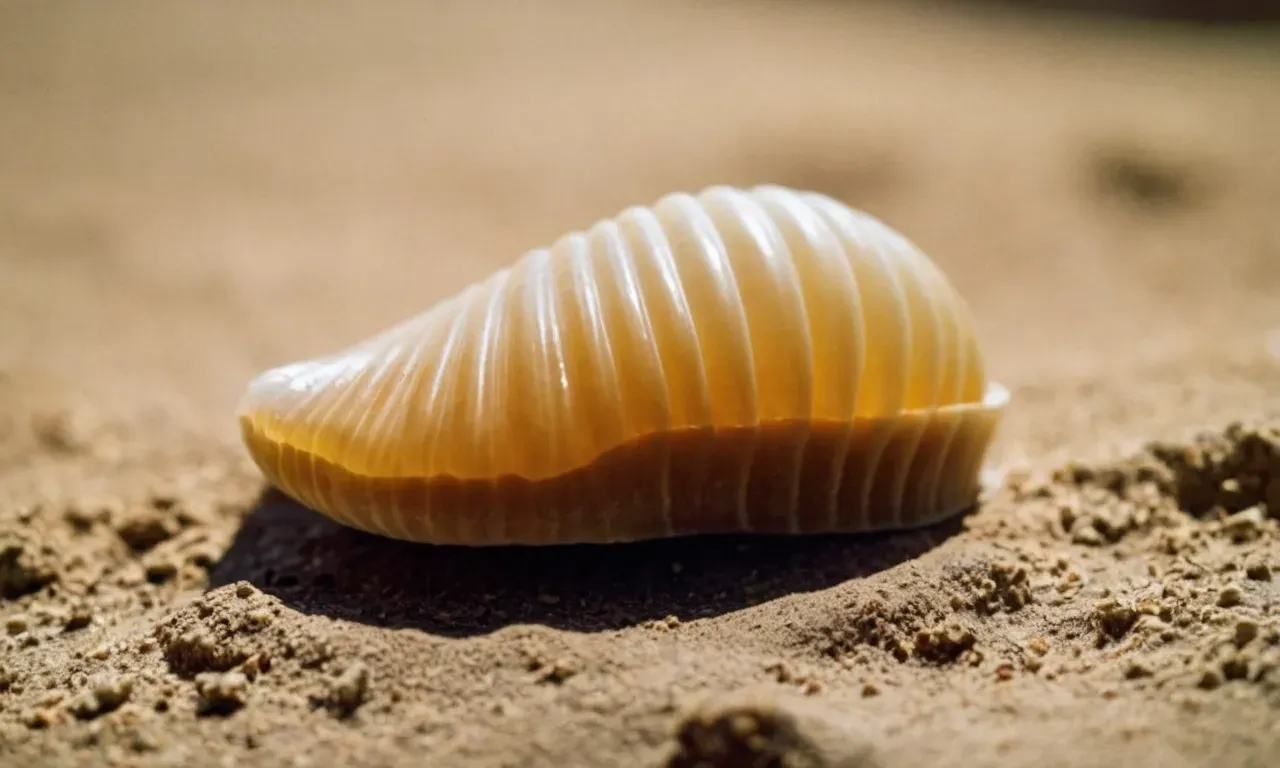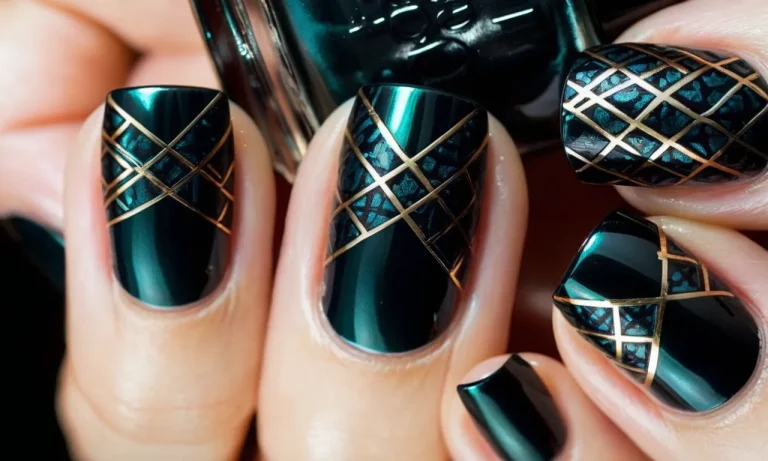Why Is My Big Toe Nail So Thick?
If you’ve noticed your big toenail is getting thicker and harder to clip or manage, you’re not alone. Thick toenails are a common occurrence that can stem from a variety of causes.
If you’re short on time, here’s a quick answer to your question: Thick toenails are often caused by toenail fungus, injury, poor footwear, or medical conditions like diabetes or psoriasis.
In this comprehensive guide, we’ll explore all of the possible reasons your big toenail may be getting thicker, when you need to see a doctor about thick toenails, and what you can do at home to help improve the health and appearance of your toenails.
What Causes Thick Toenails?
Fungal Infection
A common cause of thick toenails is a fungal infection, known medically as onychomycosis. Fungi can invade the nail bed and cuticle, causing the nail to become discolored, distorted, and thickened as debris builds up under and around the nail over time.
Fungal toenail infections are quite prevalent, affecting around 10% of adults in the US. They tend to occur more frequently on the big toe nail due to its size and exposure to warm, moist environments where fungi thrive – like the inside of shoes.
Injury and Trauma
Injuries and trauma to the toenail or toe can also lead to nail thickening over time. Even something as simple as stubbing your toe can damage the nail bed and disrupt normal nail growth. More significant injuries like drops, crushes, kicks, and jamming the toe can crack or tear the nail plate.
As the nail grows out, these injuries cause irregular thickened areas and debris to get trapped under the nail. Poor circulation and diabetes can reduce healing and worsen thick nail formation after injury.
Poorly Fitting Shoes
Wearing shoes that don’t fit properly or put too much pressure on the toes is another contributor to thick toenails. Narrow-toed shoes force the big toe inward, jamming it against the second toe. High heels shift too much body weight forward onto the toes.
Both situations can bruise or damage nail beds. Friction from loose-fitting shoes that slide and rub can also irritate nail beds. Over time, damaged or irritated nail beds can develop thickened, distorted nails.
Medical Conditions
Various medical conditions are linked to thick nail development, including:
- Psoriasis – chronic autoimmune condition that causes skin and nail changes
- Lichen planus – inflammatory condition affecting skin, hair, nails, and mucous membranes
- Peripheral vascular disease – circulatory disorder reducing blood flow to extremities
- Kidney disease – can disrupt calcium levels needed for normal nail growth
Treating the underlying condition may help improve associated nail abnormalities, but medications used and chronic inflammation can also contribute to nail changes.
When to See a Doctor About Thick Toenails
Persistent Thickness
If you notice that your big toenail seems to be getting thicker over time and does not go back to normal thickness, it’s a good idea to make an appointment with your doctor. Persistent thickness is often a sign that something more serious may be going on, like a fungal infection or even melanoma (skin cancer).
Your doctor can examine your toenail and determine if there is an underlying cause. Fungal infections, which are common causes of thick nails, often require prescription antifungal medication to clear up. And early diagnosis of melanoma is key for effective treatment.
Discoloration or Debris Under Nail
Along with thickness, take note if your toenail changes color or has yucky gunk building up underneath it. Discoloration can range from white streaks to yellowing or even blackening of the nail. Debris under the nail may look like gunk, scaly skin, or fragmented nail pieces.
These issues tend to go hand-in-hand with nail thickening and also warrant a trip to the doc. Fungal infections and melanomas frequently cause color changes and debris buildup in the nail. Your doctor can take samples and examine your nail under a microscope if needed to get to the bottom of what’s causing the problems.
Pain or Discomfort
Thick toenails can cause pain as they press against the inside of your shoe. Or you may experience tenderness and sensitivity in the toe when the nail is touched or bumped.
If your nail thickness is leading to bothersome pain or discomfort, see your podiatrist or dermatologist. They can look for potential causes and also trim and thin the nail to help relieve symptoms in the meantime.
Diabetes Risk Factors
Here’s a surprising one—if you have diabetes or prediabetes, thick toenails could be an early sign of trouble. High blood sugar levels associated with these conditions can damage blood vessels and nerves in the toes and feet, leading to nail changes.
So if you notice toenail thickening and have other risk factors for type 2 diabetes, such as being overweight and family history, it’s probably wise to get evaluated by your doctor. Catching diabetes early allows you to better manage it before complications arise.
Home Care Tips for Thick Toenails
Practice Good Foot Hygiene
Keeping your feet clean and dry can help prevent toenail fungus and thick toenails. Here are some tips for good foot hygiene:
- Wash your feet daily with soap and water, especially between the toes. Rinse and dry thoroughly.
- Apply foot powder, lotion or oil to keep feet dry.
- Wear clean, dry socks. Change socks frequently if your feet sweat a lot.
- Don’t share towels, socks or shoes with others to avoid spreading fungi.
- Disinfect shower floors, locker rooms and swimming pools with a solution of bleach and water.
Trim Nails Properly
Cutting your toenails regularly can help prevent ingrown nails and keep nail growth under control. Follow these tips for proper trimming:
- Trim nails straight across to avoid ingrown edges.
- Use sharp clippers designed for thicker toenails.
- Trim nails after bathing when they are softer.
- Cut nails regularly, about once every 1-2 weeks.
- File nail edges smooth after trimming.
- Never cut nails too short to avoid pain and ingrowth.
Wear Comfortable, Breathable Shoes
The right footwear can help minimize thick toenail growth. Look for these features:
- Roomy toe box to avoid pressure and friction.
- Leather or mesh materials to allow ventilation.
- Low heels.
- Removable insoles to accommodate orthotics.
- Avoid tight shoes, narrow toe boxes, and high heels which can worsen nail problems.
Apply Topical Treatments
Over-the-counter medicated ointments, creams or lacquers can help soften thick toenails and get rid of fungi. Some options include:
- Urea – softens nail
- Undecylenic acid – antifungal
- Ciclopirox – antifungal
- Tolnaftate – antifungal
- Tea tree oil – antifungal
Apply the products as directed until the thickened nail grows out. See a podiatrist if problems persist after 3 months of home treatment. Prescription oral medication may be needed for severe cases.
Medical Treatments for Thick Toenails
Medications
Oral antifungal medications like terbinafine or itraconazole can be prescribed to treat fungal infections causing thick toenails (1). These medications work by stopping the growth of fungus. A course of oral antifungals usually lasts 6-12 weeks.
Unfortunately, the recurrence rate after stopping treatment is quite high at about 50% (2). Topical antifungal nail lacquers containing ingredients like ciclopirox or amorolfine can also be used on their own or in combination with oral medications.
However, topical treatments alone are usually not effective for moderate or severe toenail fungus.
Laser Therapy
Laser treatments for thick toenails use focused beams of light to target fungus under and on the nail. The light creates heat that destroys fungal cells (3). Clearance rates from laser therapy are quite good with studies showing between 60-80% of patients having significant improvement (4).
However, multiple treatments are usually required with sessions done every few weeks. Laser therapy is considered safe with minimal side effects like redness or irritation after treatment. The downside is that laser equipment is expensive, so this option may not be covered by insurance plans.
Surgery
In severe cases of toenail fungus that do not respond to medications or laser therapy, surgically removing part or all of the toenail may be recommended. This is often considered a last resort due to the permanency of removal and risks like infection. The most common surgical options include (5):
- Partial nail removal (onychectomy) – only the section of nail that is thickened from fungus is taken off.
- Complete nail removal (total onychectomy) – the entire toenail is removed.
- Chemical destruction of nail bed – after nail removal, the underlying nail matrix is treated with chemicals like phenol to prevent the toenail from growing back.
Recovery takes several weeks after nail surgery. Often times, the nail will eventually grow back, but will be thinner and more normal looking if the fungal infection has been eradicated. Surgery ranges from 65-95% effective based on various studies (6).
Recurrence rates are lowest with combined nail removal and chemical cauterization techniques. Like laser therapy, these surgical treatments are usually not covered by insurance.
References:
- https://www.aad.org/public/diseases/a-z/athletes-foot
- https://www.ncbi.nlm.nih.gov/pmc/articles/PMC2996004/
- https://emedicine.medscape.com/article/1076392-overview
- https://pubmed.ncbi.nlm.nih.gov/33156058/
- https://www.ncbi.nlm.nih.gov/pmc/articles/PMC6366984/
- https://pubmed.ncbi.nlm.nih.gov/22374025/
Conclusion
While thick toenails are rarely a serious medical issue, they can be unsightly and inconvenient to manage. Pay attention to any changes in your nails and see a podiatrist if thickness persists or causes discomfort.
With proper care and treatment if needed, you can get your toenails looking healthy again.







